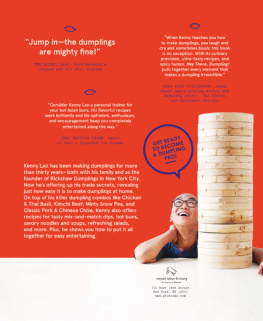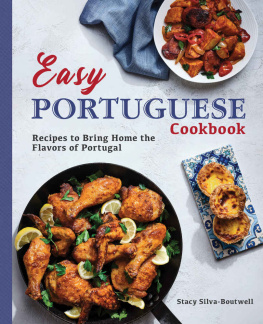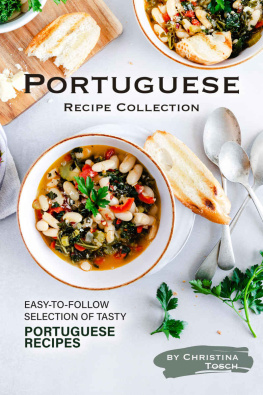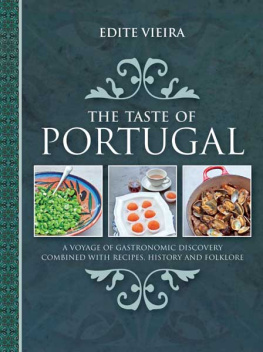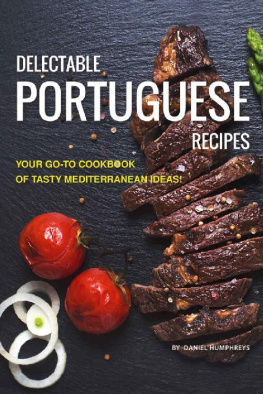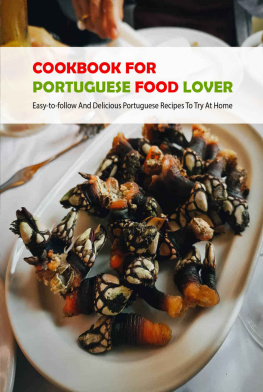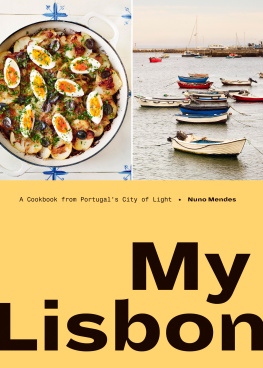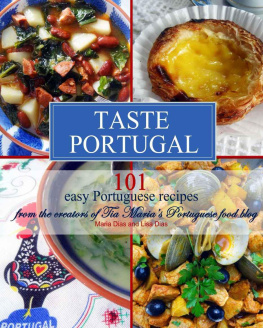


TO MY MOM, FERNANDA,
MY DAD, ALEXANDRE,
AND MY SISTER, IRENE.
DEDICATED TO THE
MEMORY OF MY UNCLE
TIO ANTONIO.
POEMAS DA NOSSA ALDEIA
FERREIRS 22-2-77
BELO LARGO DA REPBLICA
O TEU NOME E UM LUARO
FOI DAQUI QUE CRESCEU
LINDO FERREIRS DO DO
FERREIRS QUANDO NASCEU
JA COM VONTADE DE TRABALHAR
FAZIA UMAS ENXADAS
PARA A TERRA DESBRAVAR
FOI BAPTIZADO DE FERREIRS
E LOGO COBERTO DE GLRIAS
FEZ A FESTA DOS MIL ANOS
ESTA GRAVADO NA HISTRIA
POEM BY MY GRANDFATHER HARANHO, WRITTEN TO
CELEBRATE THE HISTORY OF OUR FAMILYS VILLAGE.


TABLE OF
CONTENTS
CHAPTER 1
SALT COD: BACALHAU
CHAPTER 2
THE SEA: SHELLFISH AND FISH
CHAPTER 3
PORK: FRESH AND CURED
CHAPTER 4
POULTRY: DUCK, CHICKEN, AND GAME
CHAPTER 5
MEAT: BEEF, VENISON, LAMB, AND GOAT
CHAPTER 6
SALADS, SOUPS, AND STEWS
CHAPTER 7
SIDE DISHES: VEGETABLES AND GRAINS
CHAPTER 8
DESSERTS
CHAPTER 9
BUILDING BLOCKS: STOCKS, SAUCES, OILS, AND SEASONINGS

INTRODUCTION
A ldea, the name of my Portuguese-inspired restaurant in New York City, means village. And thats how intimate it felt when Portugals President Anbal Cavaco Silva came for lunch in 2012. Leading up to the event, I didnt think it was a big deal. As always, I focused on the food. It wasnt until my dad flew up from Florida just for the luncheon that I got it. His excitement showed me what an honor it is to cook for the leader of our native country. And it was. We had come full circle as a family: My parents left their tiny village in Portugal more than forty years earlier, and the countrys leader chose to dine at the fulfillment of their sons American dream. When I was named one of Food & Wine magazines Best New Chefs in 2011, I felt that I had really arrived as a chef. With the presidents meal, I had come home.
And I literally went to my familys home for this book. To fully immerse myself in Portugals regional cuisines, I drove a loop around the country, eating and drinking my way through great restaurants and taverns. And, of course, I spent a few days in Ferreirs Do Do, my familys village in the central Beira Alta forested river region. Sharing casual home-style meals with my aunts, uncles, and cousinsmany of whom I hadnt seen in yearsreminded me of the honesty that I love in Portuguese cooking. The flavors are familiar to any American whos had Italian, Spanish, or Mediterranean food, with their abundant use of olive oil, onions, garlic, and herbs, but theres a distinct soulfulness to Portuguese cooking. The country is small enough to drive top to bottom in about four hours (granted, I drive fast), but that means that land and sea come together in satisfying national dishes like pork and clams. Situated on the coastal edge of Western Europe, Portugal is the gateway to the Mediterranean and its cuisine is the epitome of light, just-caught seafood, fresh farm-to-table vegetables, and rich meat.
I consider myself lucky to have grown up with this culinary heritage, and its the ultimate inspiration behind my cooking and careeras evident in Aldeas dishes and in this books recipes. If theres anything I learned from my travels and my years of cooking Portuguese cuisine, its that Ive just scratched the surface of the countrys culinary traditions. This book isnt a comprehensive overview or even an authentic representation of the cuisine. Its a collection of my personal experiences with my roots, in dishes that range from easy home-style to complex restaurant versions and in stories from my homes on both sides of the Atlantic. I didnt set out to put Portuguese cuisine on the map in America, but by refining and modernizing its simple, rustic dishes, Im hoping to do just that at Aldea and in these pages. Even though my palate is global and my culinary style free-spirited, Portugal is at the heart of what I do.
Thats probably why my dishes are deeply influenced by flavors from around the world. As the first Europeans to arrive in India, Brazil, and Japan, and the first to establish the earliest global empire in Africa, Asia, and South America, the Portuguese influenced other cuisines around the world and adapted ingredients and techniques from distant cultures into theirs. Ive continued that tradition by incorporating global ingredients into my Portuguese-inspired dishes and creating new ones inspired by the former colonies.
The soul of these dishes is my celebration of pristine ingredients with creativity, focused technique, and the love of food first discovered in my Portuguese-American family. Because my family made these dishes with ingredients found in Connecticut, I know you can easily source the ingredients too. Of course, Ive thrown in some of my restaurants recipes, but even those ingredients are easy enough to get nowadays.
), our national collard greens soup, is just as intensely satisfying. Its a wholesome bowl of satiny pureed potato with a fresh green note from leafy collards, an underlying smoky meatiness from chourio, and a velvety finish from fruity olive oil. It epitomizes the Portuguese balance between meat and vegetables. My restaurant cooking transforms Iberian cuisine through the context of global high-end cooking. I use the same ingredients from my home-style dishes, with the addition of seasonings from around the world, and the spirit of soulful cooking remains, albeit refined into complex, composed plates.
This is the kind of deeply satisfying food that welcomes large gatherings of family and friends. Its festive, wholesome, and so damn delicious. This book is a tour of a beautiful old countrys incomparable cuisine, both rustic and refined. If you havent already fallen for Portuguese cuisine, I hope that now you will.

You have to dig in with your hands to eat this feast of seafood at Cervejaria Ramiro, one of my favorite Lisbon restaurants.
MY STORY:
IT TAKES A VILLAGE
1969 2014 | PORTUGAL TO AMERICA
M y parents, Alexandre and Fernanda, were born and raised in Ferreirs Do Do, a small village four hours north of Lisbon. For generations, their families lived and worked in the lush hillsides that flank the ro Do. A breathtaking stone bridge spans the water and little more than a church and soccer field line the main lane. In the surrounding woods, its a food lovers fantasy of olive, fig, and eucalyptus trees. Each time Ive returned as an adult, Im struck by the beauty of the land and the quality of the fruits, vegetables, pigs, chickens, and goats grown and raised on it. But I knew that despite the rich natural resources, the job prospects had been bleak for my parents and life had been hard. It wasnt difficult for them to accept my aunt Natalias invitation to join her in America. They brought with them a deep knowledge of the dishes they grew up eating and plans to keep grilling sardines and roasting suckling pig in Danbury, Connecticut, where their extended family and other villagers had immigrated en masse.
Next page

